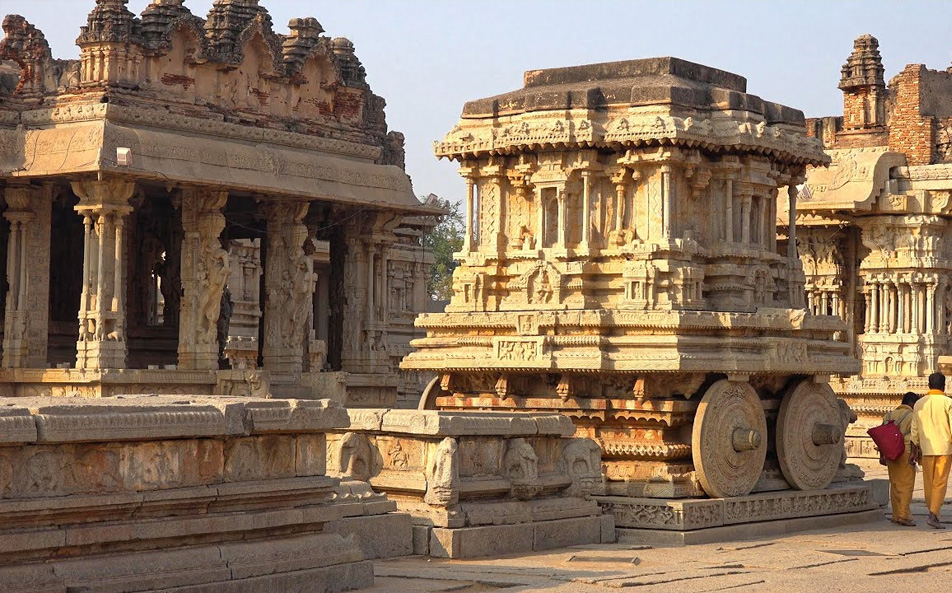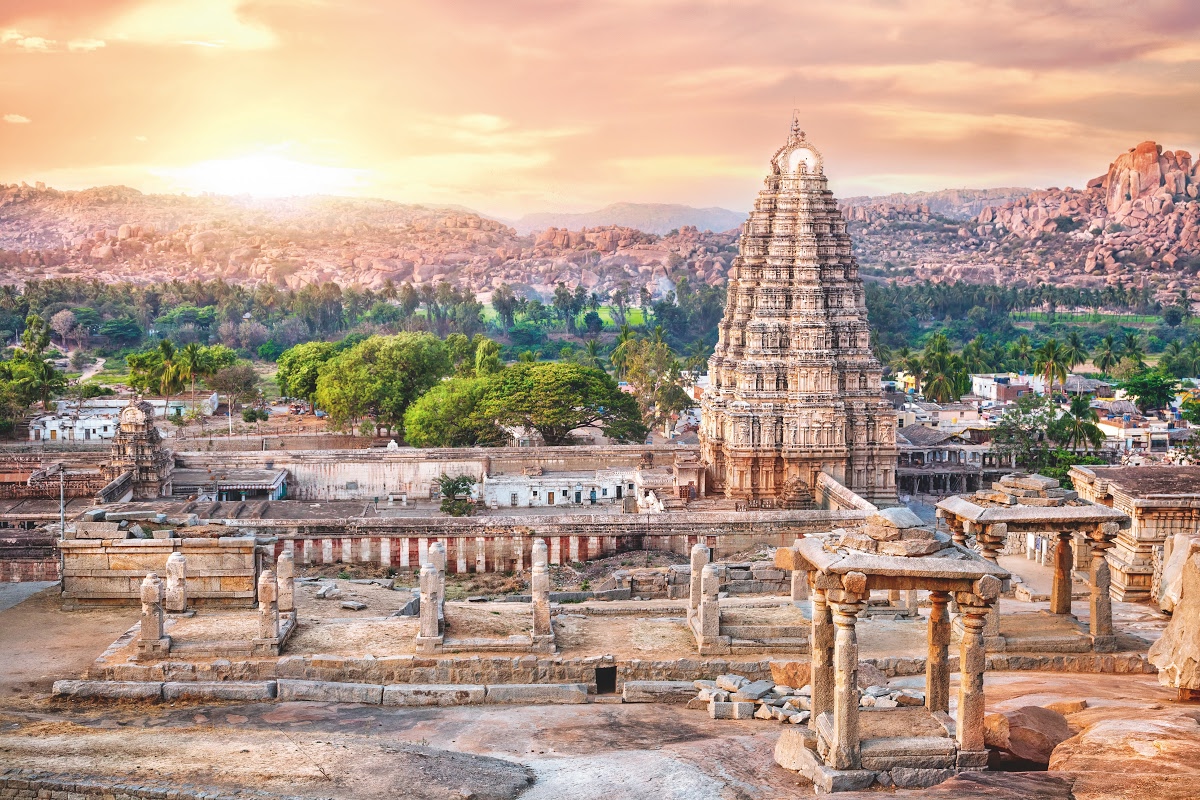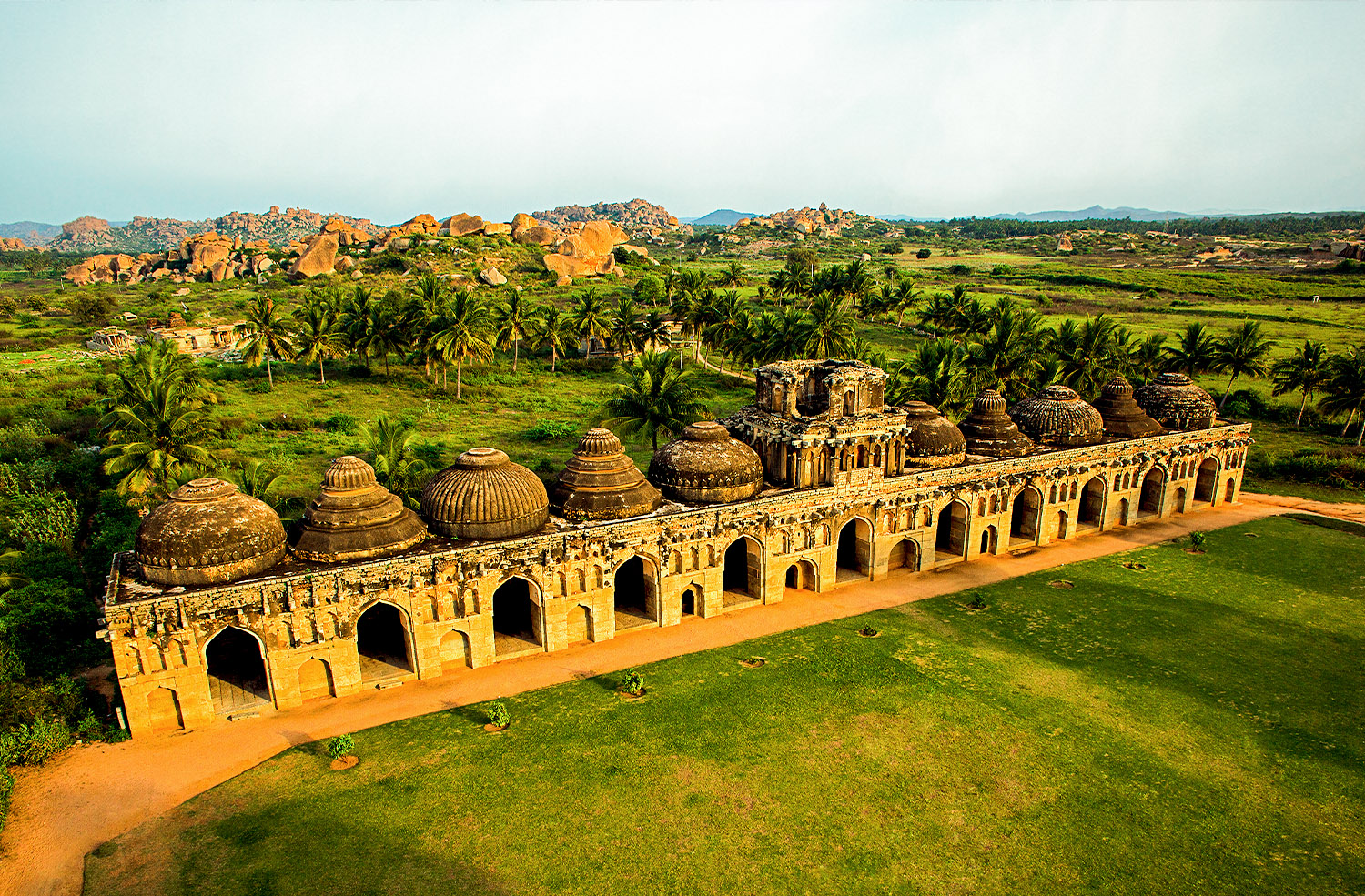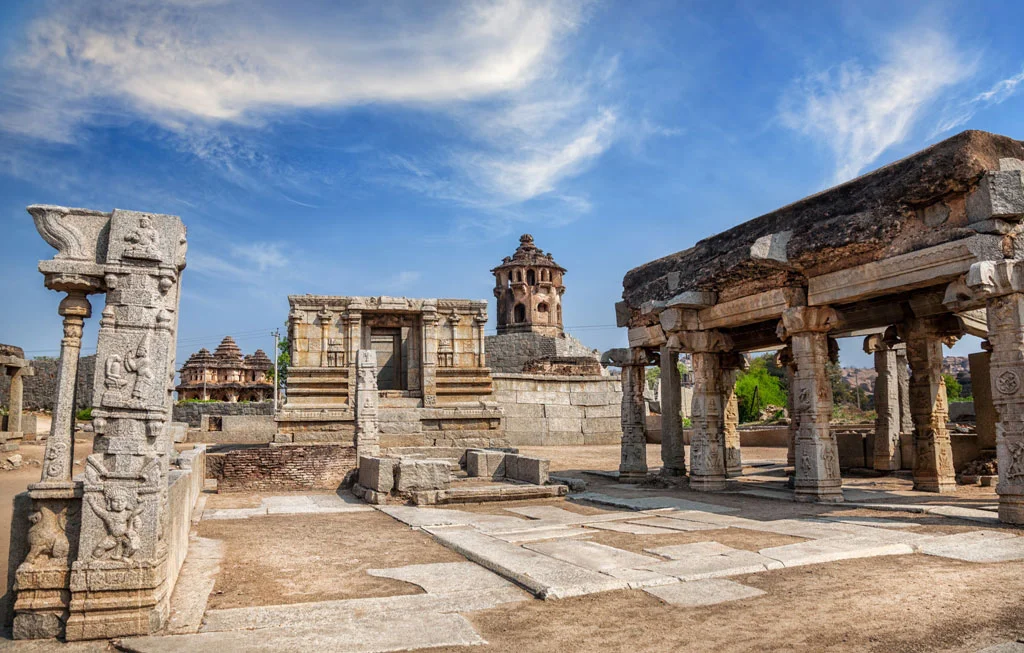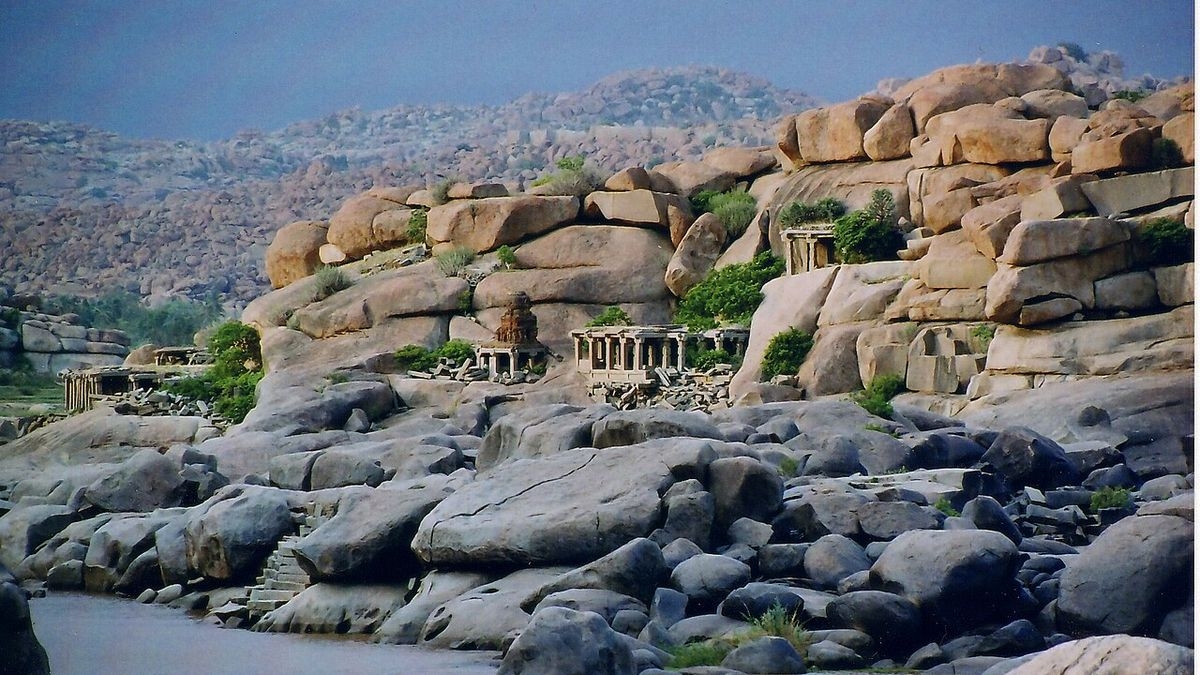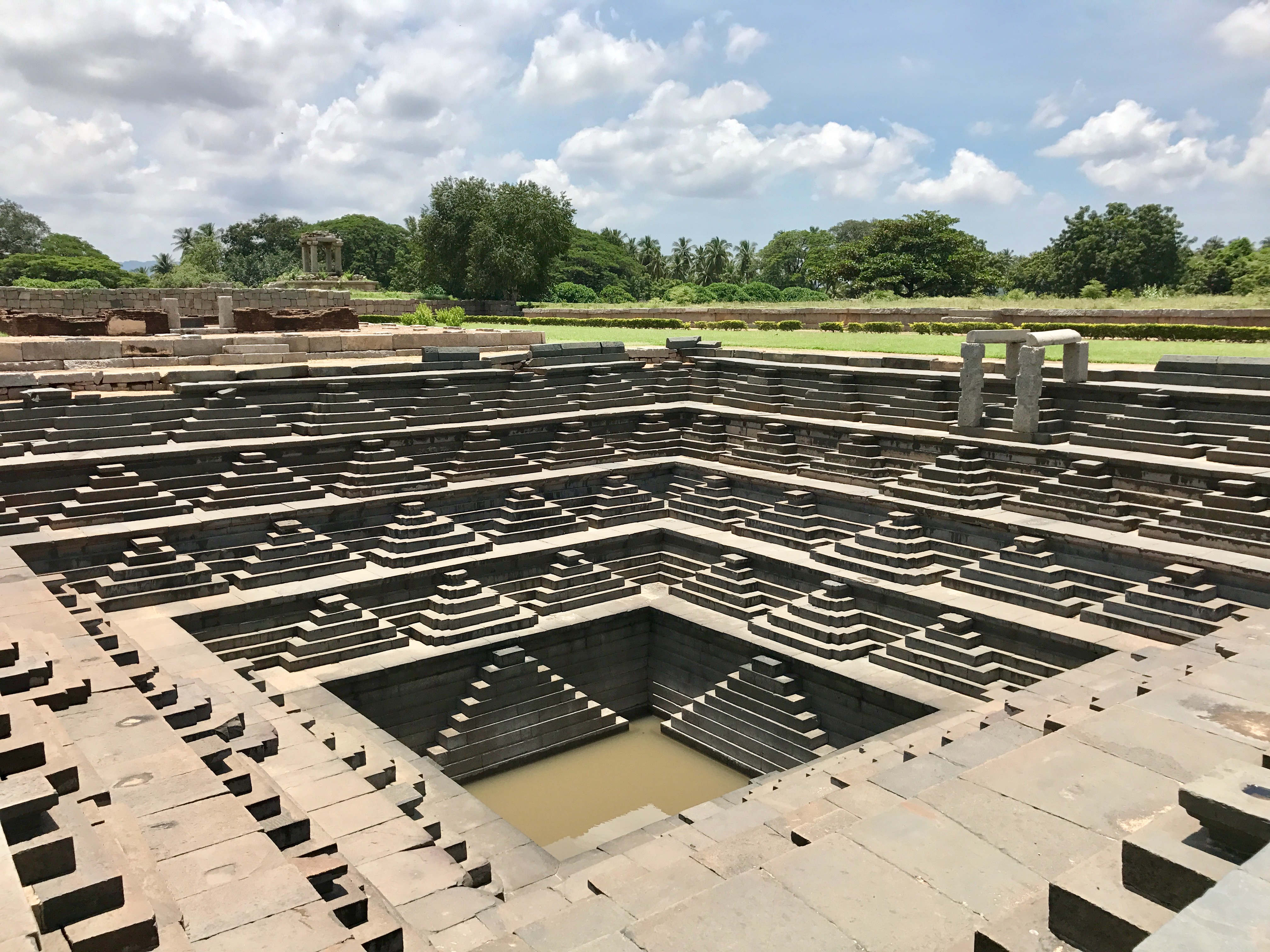
The United Indian

Nestled amidst the rugged boulders and serene banks of the Tungabhadra River in Karnataka, India, lies Hampi, a UNESCO World Heritage Site that whispers tales of a bygone era. This sprawling complex, also referred to as the Group of Monuments at Hampi, is not just a collection of ruins; it's an open-air museum, a testament to the architectural brilliance and rich history of the Vijayanagara Empire.
Why is Hampi Important?
The significance of Hampi is multifaceted. Here's a glimpse:
• Last Great Hindu Kingdom: Hampi was the capital of the Vijayanagara Empire (1336-1565), the last bastion of Hindu rule in South India. Its grandeur and prosperity left an indelible mark on the region's history and culture.
• Architectural Marvel: Vijayanagara rulers were prolific builders. Hampi boasts over 1600 monuments, showcasing a unique blend of Dravidian and Islamic styles. From towering temples to intricate palaces, each structure narrates a story of artistic mastery.
• Religious Significance: Hampi predates the Vijayanagara era and finds mention in ancient Hindu texts. The presence of the active Virupaksha Temple, dedicated to Lord Shiva, and other religious structures reinforces its enduring spiritual significance.
• Urban Planning Prowess: The vast expanse of Hampi reveals a well-planned city with distinct zones for royal enclosures, public spaces, and religious complexes. Understanding its layout sheds light on the sophisticated urban planning of the era.
A Journey Through Time: Hampi's Historic Significance
Imagine a city teeming with life, adorned with magnificent palaces, bustling markets, and towering temples. Hampi's history unveils a fascinating narrative:
- Rise of an Empire: Founded in the 14th century, Hampi rose to become a powerful empire, flourishing through trade, art, and cultural exchange. Foreign travelers like Domingo Paes and Niccolò da Conti marveled at its opulence.
- Architectural Legacy: The Vijayanagara rulers were patrons of the arts. Their architectural legacy is evident in the intricately carved temples, pillared halls (mandapas), and monolithic structures. The iconic Vittala Temple with its famed Stone Chariot is a prime example.
- Sudden Decline: In 1565, the Deccan Sultanates inflicted a crushing defeat on Vijayanagara, ransacking the city and leaving it in ruins. Hampi's story reflects the impermanence of empires, yet its ruins stand as a testament to its former glory.
What Makes Hampi So Special?
Hampi's unique charm lies in the contrasting beauty of its natural and man-made wonders:
- Landscapes of Contrast: The dramatic landscape of granite boulders juxtaposed with the serene Tungabhadra River creates a captivating backdrop for the ruins. Sunrise and sunset paint these ruins in an ethereal glow, making them even more picturesque.
- A Fusion of Styles: Vijayanagara architecture is a fascinating blend of Dravidian and Islamic influences. This artistic fusion is evident in the detailed carvings, ornate pillars, and imposing gateways, adding a layer of visual intrigue.
- A Microcosm of History: Walking through Hampi is like stepping back in time. Each structure, be it a grand temple complex or a crumbled marketplace, unveils a story waiting to be unraveled.
Experiencing the Grandeur of Hampi Temples
Central to the allure of Hampi are its awe-inspiring temples, showcasing not only intricate carvings and majestic gopurams (entrance towers) but also a profound spiritual ambiance that enchants visitors.
The Virupaksha Temple, dedicated to Lord Shiva, stands as the oldest functioning temple in Hampi, dating back to the 7th century. Its towering gopuram adorned with intricate sculptures beckons devotees and tourists alike to witness its architectural splendor.
The Vittala Temple, a UNESCO World Heritage Site, is perhaps the most iconic structure in Hampi. Renowned for its ornate stone chariot, a symbol of Hampi's architectural brilliance, this temple complex is a masterpiece of Dravidian architecture. Visitors are mesmerized by the musical pillars that produce melodious tones when struck, showcasing the advanced acoustical engineering of ancient times.
As one wanders through the sprawling temple complexes, such as the Hazara Rama Temple, with its exquisite bas-reliefs depicting scenes from the Ramayana, or the Achyutaraya Temple, adorned with intricate carvings of celestial beings and mythological figures, they can't help but marvel at the craftsmanship and devotion that went into their creation.
The Mystery Behind the Hampi Stone
Nestled amidst the ancient ruins of Hampi lies a geological wonder that has puzzled scientists and historians for centuries—the Hampi Stone. Believed to be the oldest rock formation on Earth, this massive boulder is a testament to the forces of nature and the passage of time.
Geologists speculate that the Hampi Stone predates the formation of the Indian subcontinent itself, making it over 3 billion years old. Its smooth, weathered surface bears witness to eons of geological activity, from volcanic eruptions to tectonic shifts.
Legend has it that the Hampi Stone holds mystical powers and is imbued with cosmic energy. Local folklore is replete with tales of spiritual experiences and miraculous occurrences associated with the stone, drawing pilgrims and seekers from far and wide.
Despite numerous scientific studies and geological surveys, the exact origins of the Hampi Stone remain shrouded in mystery. Some speculate that it may have been carried to its current location by glaciers during the Ice Age, while others attribute its formation to ancient volcanic activity.
Regardless of its origins, the Hampi Stone continues to captivate the imagination of visitors, serving as a silent witness to the ever-changing landscape of Hampi and the enduring mysteries of the universe.
Fun Facts About Visiting Hampi
- Cycling is a popular way to explore the vast expanse of Hampi. Rent a bicycle and navigate the narrow lanes, stopping at monuments that pique your interest.
- Coracle rides offer a unique perspective. These traditional round boats made of wicker and leather provide a thrilling ride on the Tungabhadra River.
- Hampi comes alive during the Hampi Utsav. Held in November, this vibrant festival showcases traditional dance performances, music, and a colorful procession.
- Sample the local cuisine. From fluffy dosas and flavorful curries to melt-in-your-mouth badam halwa, Hampi offers a delightful culinary experience.
- Witness the sunrise over Matanga Hill. Hike up Matanga Hill for breathtaking panoramic views of the sunrise painting the ruins in a golden hue.
A Call to Adventure: Explore Hampi
Hampi is a treasure trove waiting to be explored. Here's why you should consider adding it to your travel bucket list:
- A Visual Feast for History Buffs: Immerse yourself in the rich tapestry of Vijayanagara history. Each monument whispers tales of a bygone era, transporting you back in time.
- A Photographer's Paradise: Capture the essence of Hampi through your lens. The dramatic landscapes, intricate carvings, and play of light and shadow offer endless photographic opportunities.
- A Spiritual Sanctuary: Find solace amidst the ancient temples and sacred sites. Hampi's serene atmosphere provides a space for introspection and spiritual connection.
Hampi beckons you to embark on a journey through time. So, pack your bags, lace up your walking shoes, and get ready to be awestruck by the grandeur of this UNESCO World Heritage Site.
Read more in Recent Events
Jul 03, 2025
TUI Staff
Jul 03, 2025
TUI Staff
Jun 29, 2025
TUI Staff
Jun 27, 2025
TUI Staff

Stay Tuned with The United Indian!
Our news blog is dedicated to sharing valuable and pertinent content for Indian citizens. Our blog news covering a wide range of categories including technology, environment, government & economy ensures that you stay informed about the topics that matter most. Follow The United Indian to never miss out on the latest trending news in India.
©The United Indian 2024

